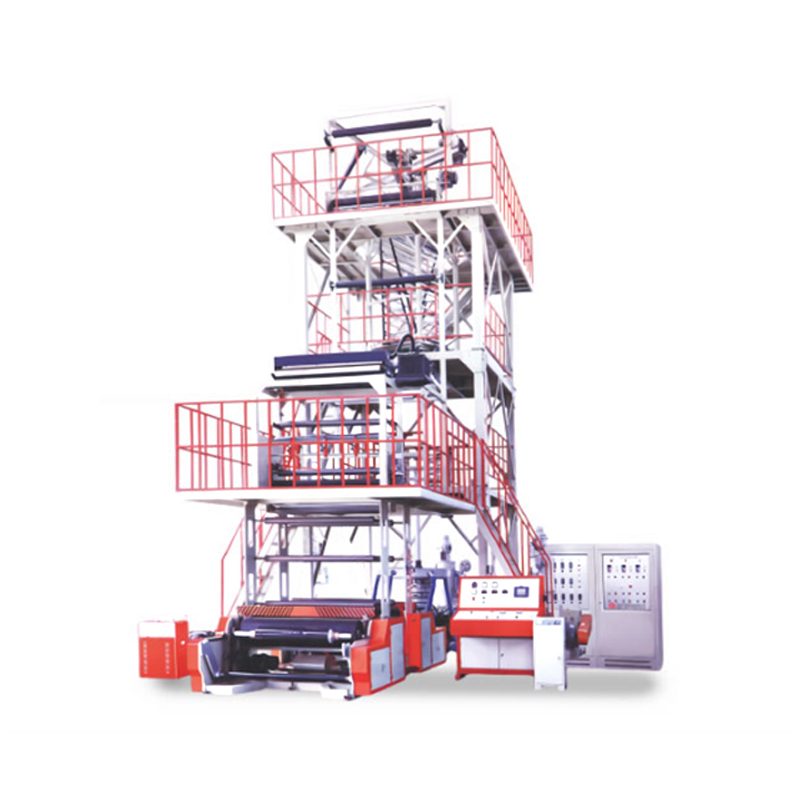AB Double-Layer Extrusion Blown Film Machines: Advancing Film Quality and Operational Efficiency
 By Admin
By Admin
In the flexible packaging sector, the evolution of extrusion blown film technology continues to reshape how manufacturers balance performance, cost, and sustainability. Among the key innovations driving this progress is the AB Double-Layer Extrusion Blown Film Machine, a specialized equipment platform designed to produce two-layer co-extruded films with enhanced properties and manufacturing efficiency.
Unlike single-layer systems, the AB double-layer machine features two independent extruders that create films combining distinct materials in each layer.
1. Dual Extruder Design for Customized Film Structures
At the heart of AB double-layer blown film technology is the capability to co-extrude two polymers simultaneously, forming an outer layer (A) and an inner layer (B). This configuration enables manufacturers to engineer films with specific surface and core properties.
For example, the outer layer may use a high-gloss, printable resin to enhance packaging aesthetics, while the inner layer employs a sealant-grade polymer optimized for heat sealing and product protection. This dual-layer approach creates films that outperform single-layer counterparts in strength, sealability, and barrier function.
2. Mechanical Properties and Seal Integrity
Co-extruded films produced by AB double-layer machines exhibit improved tensile strength, tear resistance, and puncture durability compared to single-layer films. The layered structure distributes mechanical stresses more evenly, reducing film failure during packaging, handling, and transport.
Moreover, by selecting sealant resins for the inner layer, manufacturers can achieve enhanced seal integrity, ensuring secure packaging that prevents leaks and contamination—crucial for food, medical, and industrial products.
3. Enhanced Barrier and Functional Performance
While primarily used for non-barrier films, AB double-layer extrusion technology can incorporate specialty polymers in either layer to improve moisture resistance, aroma retention, or chemical resistance. The ability to combine different resin types offers flexibility in tailoring film performance for a variety of end-use requirements.
This adaptability supports applications ranging from fresh produce packaging requiring moderate barrier properties to industrial films needing chemical durability.
4. Precise Thickness Control and Uniformity
The AB double-layer extrusion process benefits from advanced die technology designed to deliver consistent material flow from each extruder. Coupled with automated thickness measurement systems, these machines maintain tight gauge tolerances across the film width and length.
Uniform film thickness improves product consistency and optimizes material usage, reducing waste and manufacturing costs.

5. Energy-Efficient Operation
Operating two extruders simultaneously might suggest increased energy consumption; however, modern AB double-layer blown film machines employ energy-saving features such as low-friction screws, insulated barrels, and variable frequency drives (VFDs). These elements reduce power requirements while maintaining stable extrusion conditions.
Intelligent heating control and optimized cooling systems further enhance energy efficiency, supporting sustainable manufacturing goals.
6. High-Speed Production with Stability
AB double-layer machines are engineered for continuous, high-speed operation, producing films at outputs typically ranging from 150 to 350 kg per hour depending on machine size and film specifications. Precision screw designs and robust extruder components ensure stable melt pressure and temperature, critical for consistent film quality during extended runs.
This stability scrap rates, improves yield, and boosts overall equipment effectiveness (OEE).
7. Flexible Material Compatibility
The machines support a broad range of polymer combinations, including LDPE, LLDPE, EVA, and metallocene polyethylenes. This material versatility allows converters to customize film properties, such as flexibility, sealing temperature, and clarity, according to specific market needs.
The ability to quickly switch between formulations and materials also enables rapid product changeovers, enhancing manufacturing agility.
8. User-Friendly Automation and Controls
Modern AB double-layer blown film machines come equipped with intuitive touchscreens, programmable logic controllers (PLCs), and recipe management systems. Operators can easily monitor and adjust process parameters like temperature zones, screw speed, and air ring cooling.




